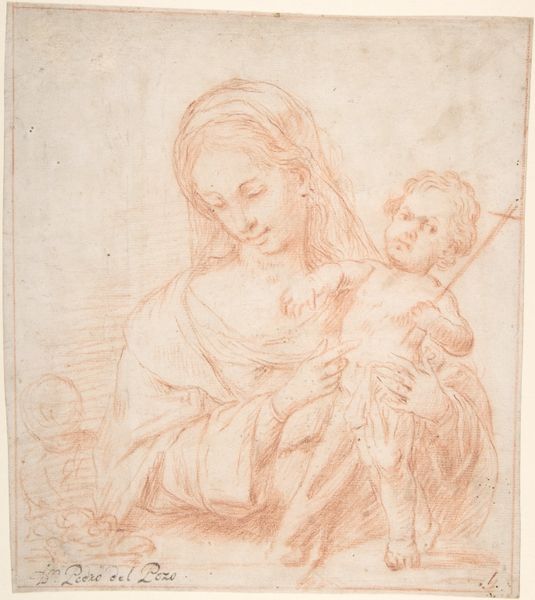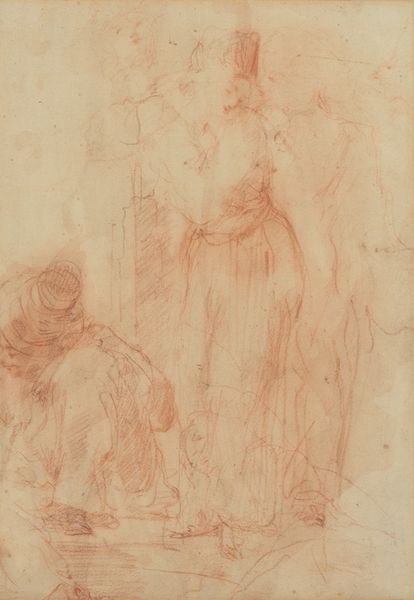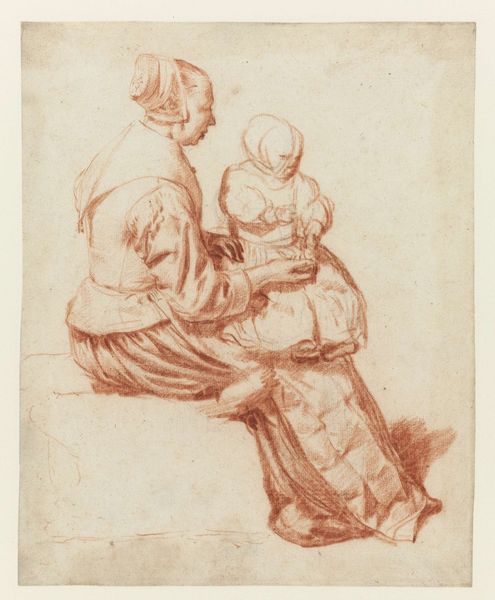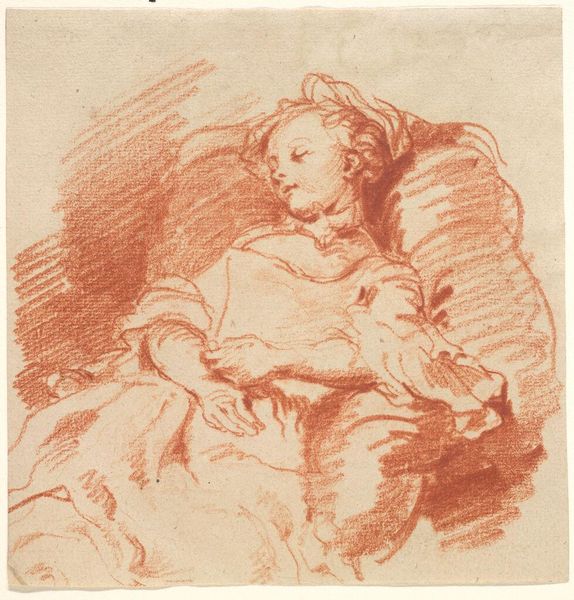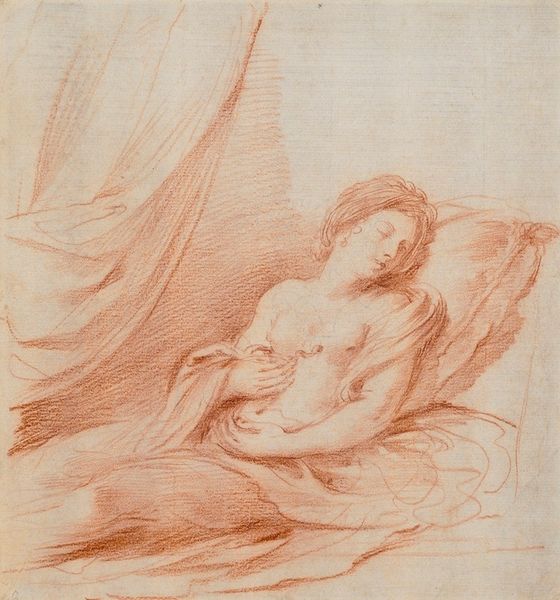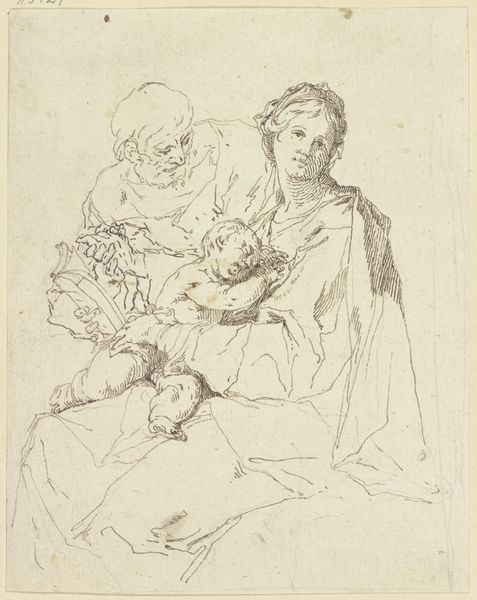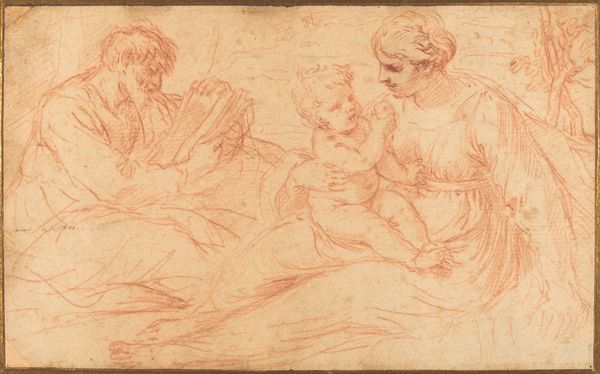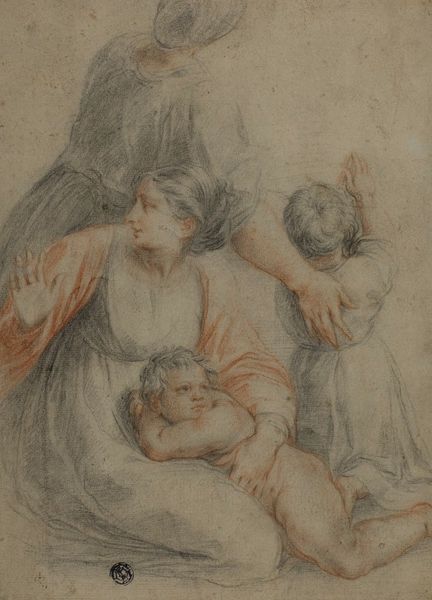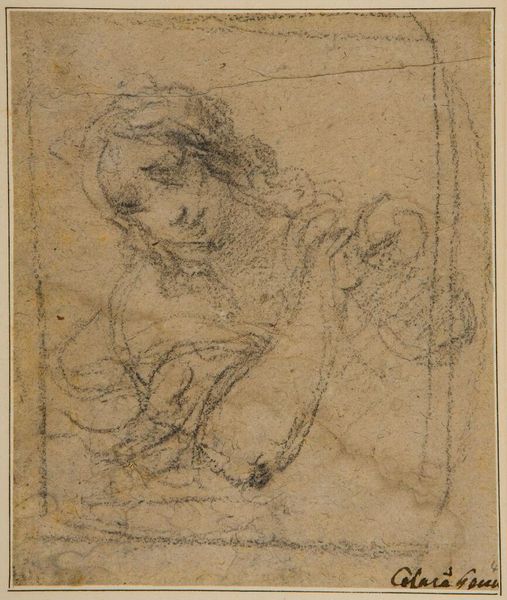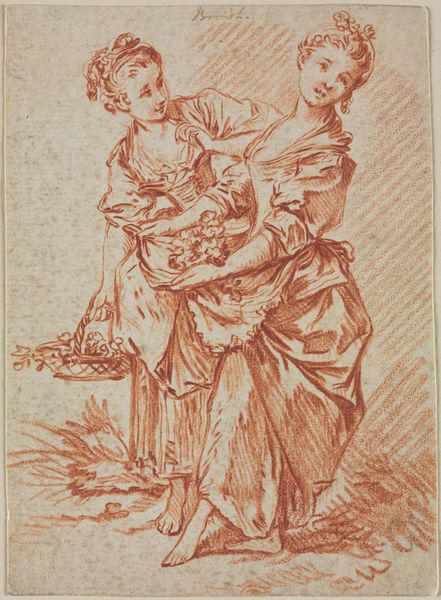
drawing, dry-media
#
portrait
#
drawing
#
baroque
#
figuration
#
dry-media
#
italian-renaissance
Copyright: Public Domain: Artvee
Editor: Here we have Guercino’s "Saint Cecilia Playing the Organ," a drawing from the 1650s. There's a hazy, almost dreamlike quality to it. It's quite simple in its composition. What strikes me most is the intimate connection between Saint Cecilia and the angel; it feels almost maternal. How do you interpret this work? Curator: I see a powerful representation of the intersection between the divine and the human, mediated through the feminine. Saint Cecilia, often seen as a symbol of sacred music, is presented not as a detached, heavenly figure but as grounded, relatable. Consider the period: the 1650s, a time of intense religious and political upheaval. Guercino is choosing to depict a female saint in a moment of collaboration with an angel, creating music. What do you think that says about the role of women, and specifically female artistry, in that era? Editor: I hadn’t thought of it in that way. It suggests an acknowledgement, perhaps even a subtle celebration, of female creativity and spiritual leadership within a patriarchal structure. Curator: Precisely! And think about the organ. It's not just an instrument; it's a symbol of organized religion, traditionally controlled by men. By placing Saint Cecilia at the organ, Guercino is challenging those established power dynamics, even if subtly. This drawing allows us to reflect on how female figures were—and still are—both revered and constrained by religious institutions. How does viewing it through this lens affect your initial perception of intimacy? Editor: It deepens it. The intimacy isn't just aesthetic; it's a symbol of collaborative creativity resisting established power structures, and potentially pointing towards a need to democratize the structures that govern artistic or spiritual expression. Curator: Exactly! By examining these layers, we see that art is always in dialogue with its time, reflecting and refracting the social and political realities of its creation. Editor: I definitely see this drawing in a new light now, it gives me a deeper insight on this Saint Cecilia and I am left questioning gender roles in that era.
Comments
No comments
Be the first to comment and join the conversation on the ultimate creative platform.
